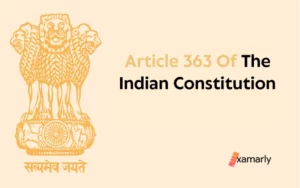Evidence from ancient history shows how effectively India was ruled by different dynasties and how the beginning of the Delhi sultanate mark the development of cultural diversity in India. The history of foreign invasion to rule the Indian subcontinent can be traced back to the Turkish and Afghan invasions and continued until the Mughals in order to conquer the throne of Delhi. Sayyid Khizr Khan was one of the many rulers who ruled India for a brief period of 7 years ( 28th May 1414 – 20th May 1421 ).
Who Was Khizr Khan?
- The Sayyid dynasty which ruled from 1415 to 1451 was founded by Sayyid Khizr Khan.
- Firoz Shah Tughlaq appointed Khan as governor of Multan, and he was a renowned administrator. Due to the dread of Amir Timur, he refrained from assuming any regal titles and was comfortable with the titles of Rayat-i-Ala (Sublime Banners) and Masnad-i-Aali (Most High Post).
- Coins bearing the names of former Tughlaq kings were still struck throughout his tenure.
- His son Mubarak Khan, who adopted the name Muizz-ud-Din Mubarak Shah, succeeded him after his death on May 20, 1421.
Early Life Of Khizr Khan
- In the book Tarikh-i-Mubarakshahi, the modern author Yahya Sirhindi claims that Khan was a member of the Sayyid lineage and a progenitor of Muhammad.
- However, Yahya Sirhindi based his conclusions on weak evidence, including the Sultan’s noble demeanor, which marked him as a descendant of Muhammad, and the famed saint Sayyid Jalaluddin Bukhari of Uch Sharif’s casual acceptance of his Sayyid pedigree.
- Richard Eaton claims that Malik Mardan Daulat, a Multan-based Punjabi lord of the Khokhar clan, was the forefather of Khan.
- Khizr Khan’s father, Malik Sulaiman, was taken in by Daulat, the Multan governor, as his son.
- Sulaiman replaced Malik Shaikh, another son of Malik Mardan, as governor.
- Khan was named governor by Firuz Shah Tughlaq after he passed away.
- Sarang Khan, the brother of Mallu Iqbal Khan, had him ejected from Multan in 1395.
- Khan hid in Mewat before joining Timur.
- Khizr Khan is thought to have been nominated by Timur as his viceroy in Delhi prior to his departure, despite the fact that he was only able to consolidate his rule over Multan, Dipalpur, and some of Sindh.
See Also – Sayyid Dynasty Of Delhi Sultanate
Reign And Establishment Of The Sayyid Dynasty
- Khizr Khan named Malik-us-Sharq Tuhfa as his wazir after ascending to the throne. He was granted the title of Taj-ul-Mulk and held the position until 1421.
- Sayyid Salim was handed the fief of Saharanpur.
- Multan and Fatehpur fiefs were given to Abdur Rahman.
- Khizr Khan invaded Gujarat in 1412.
- To put down Har Singh, the Raja of Katehar in 1414, Taj-ul-Mulk deployed an army. Raja attempted to flee into the woods but was eventually forced to submit and pledged to continue paying tribute.
- Khizr Khan requested permission from Shah Rukh in 1417 to have his own name added as a suffix to Shah Rukh’s.
- When Har Singh revolted in 1418, Taj-ul-Mulk completely crushed him.
- Khizr Khan captured Delhi on May 28, 1414, and Daulat Khan Lodi was put in prison.
Sayyid Dynasty: After Khizr Khan
Mubarak Shah, Muhammad Shah, and Alam Shah were the successive rulers of the Sayyid dynasty. The last Sayyid ruler, Alam Shah was defeated by Bahlul Khan Lodi. Thereafter, the Lodi dynasty replaced the Sayyid dynasty in the year 1451.
Conclusion
- Although Sayyid Khizr Khan was a ruler of the Sayyid dynasty, his claim to be the descendant of the Prophet of Arabia was dubious by many history researchers. His claim to be a descendant of the Prophet might rest on his recognition as a pious, truthful, and generous man.
- The establishment of this dynasty won’t have been possible without the aid received from Timur.
- After a while, the dynasty which was established by Khizr Khan was governed ahead by Mubarak Shah. After the rulers Muhammad shah and Alam Shah succeeded the throne, it started getting fragmented and the sultanate voluntarily resigned to Bahlol Khan Lodi due to their inability to rule.






